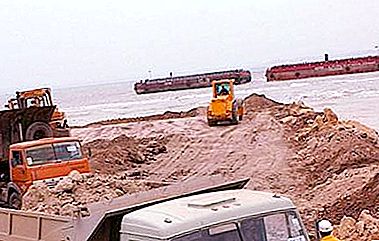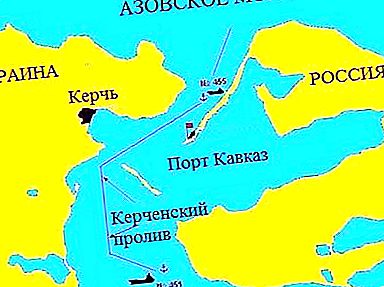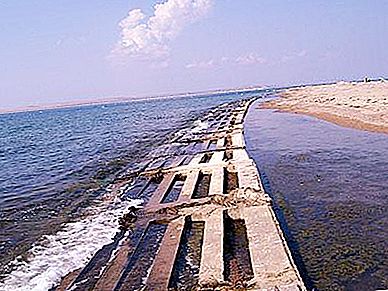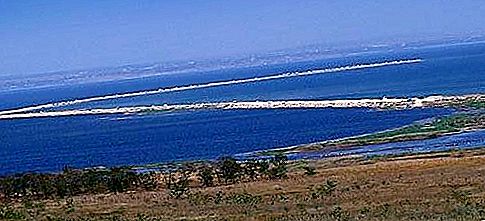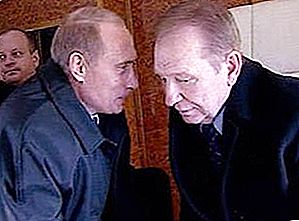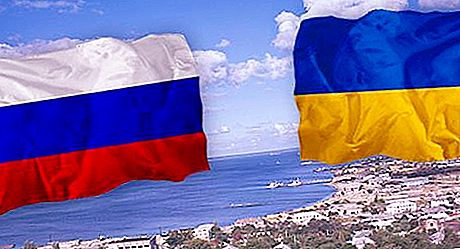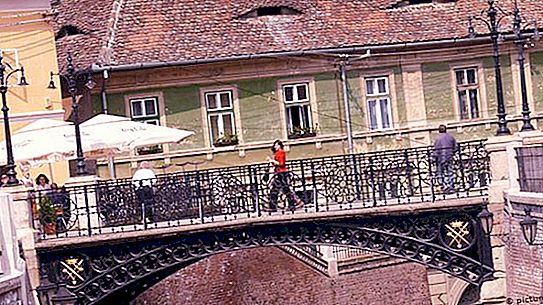Tuzla Island is small: about six kilometers long and no more than five hundred meters wide, such an oblong strip of sand between the Taman Peninsula and the Crimea. By itself, this piece of land is of little value, only its place on the geographical map is important. In 2003, this island became famous throughout the world. The Ukrainian parliament was seething, one deputy proposed to give "to the hell out of Tuzla", the other introduced the neologism "to hell" into everyday life. Other phonetic-linguistic playfulness sounded, gracefully not inferior to those given. Russian politicians were not inferior to their Ukrainian counterparts in an effort to demonstrate courageous brutality and militancy.
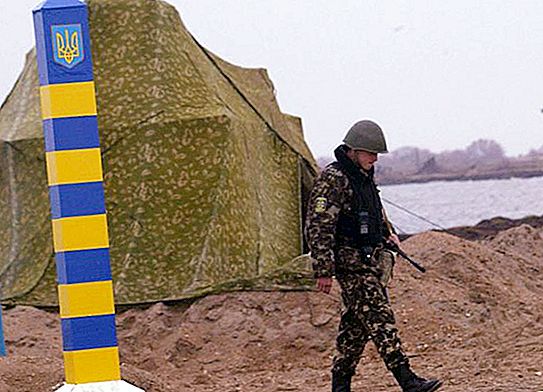
The weather is normal on the island …
On an area of three and a half square kilometers, in principle, a small town can fit. It would be if the Japanese populated this territory, for example, or representatives of some other people who value land above personal comfort. For Ukraine, a rather big country, this appendage to the peninsula obtained after the collapse of the USSR had rather symbolic significance. Living here is almost impossible: when it storms, half of the area is hidden under water. In addition, the sea takes its toll: over the five years preceding the dispute, one square kilometer of land is washed away by waves. Reinforcement work was slow, they were limited to the installation of reinforced concrete slabs. During periods of seasonal storms, the territory was actually separated from the "mainland", but this did not interfere with the inhabitants ready for deprivation, who inhabited the island of Tuzla. The recreation center "Two Seas" of the Kerch port and another, factory, "Albatros", a fishing village and a border outpost coexisted peacefully on a small piece of land. Here was even his own store, which worked, however, only in the warmer months.
Start of a dispute
At first glance, nothing foreshadowed any friction between the two fraternal states. This is not such an important part of the territory … Russia has come to terms with the loss of Crimea, not to mention such an insignificant and sparsely populated object as the island of Tuzla. The conflict arose in the autumn months of 2003, after the Ukrainian border guards saw through binoculars, and later with the naked eye, that a certain hydraulic structure was approaching them from the adjacent side, and quite quickly, one and a half hundred meters a day. The military did not know how to react to what was happening, and reported their observations to the higher authorities. That, in turn, notified Kiev. Through diplomatic channels, the Ukrainian government demanded clarifications from the Russian side and received them. The construction being constructed is called a dam; it is being built to improve the environmental situation in the waters of the Sea of Azov. However, such an explanation did not satisfy the Ukrainian leadership; it saw in the actions of Russian hydro-constructors an expansive creep to the island of Tuzla. And there were grounds for such an assumption.
Background
A painful attitude to territorial integrity issues was characteristic of all administrations, starting with Kravchuk, who occupied offices on Bankova Street in Kiev. The controversy of the eligibility of the Crimean Autonomous Okrug joining the Ukrainian SSR was indeed a "trump card" for politicians in Russia, especially in the pre-election period, and the counter-arguments of their Ukrainian colleagues on the ultra-patriotic platform played the same role. Objectively, the Taman coast and the island of Tuzla until 1925 were one, until the deep of the sea absorbed part of the narrow isthmus. Legally, the arguments in favor of Ukraine’s belonging to this territory are not perfect, but it has so happened since 1991 that any ambiguities were interpreted in favor of the “younger brothers”. In the Yeltsin period, even the city of Union subordination Sevastopol, which was not formally part of the Crimean Autonomous Region, was transferred to Ukraine, although Russia could have defended it in international arbitration courts.
The economic background of the conflict
The dispute between Russia and Ukraine over the Tuzla island had quite utilitarian reasons - at least two.
Firstly, the country to which it belongs actually and legally controls shipping through the Kerch Strait, and this means the receipt of one and a half tens of millions of US dollars annually in the budget.
Secondly, the island of Tuzla, according to all international legal standards, sets the boundary line of territorial waters. Under the existing status, most of the fish wealth of the Sea of Azov fell into the zone of economic interests of Ukraine.
Thus, the island of Tuzla from an almost useless piece of sandbank in the Soviet years turned into a strategically important object of international law.
Possible actions
The underwater relief of the seabed adjacent to Tuzla and covering the Kerch Strait, in a sense, provoked a conflict. The fact is that the most deep-water and fish-rich areas went to Ukraine, while the Russian Federation went to shallow water. Actually, the Russians could easily solve this issue in another way, simply by deepening their bottom section. The border of territorial waters would not be violated, but another problem would arise regarding the very existence of these very fish wealth. Fishing is most effective in the western, deepwater part of the strait. But the fish spawns in Russian shallow water. If there are no conditions for this, then, as they say in Odessa, there will be “nothing to catch” (only in the most literal sense). And the fish factories were located mainly in the Crimea, then Ukrainian. It should be noted that the Russian side did not take such a disastrous step for the environment.
Conflict development and mutual hassle
Naturally, there was no question of really conducting any kind of military operations. To overthrow the attack by mobile mechanized columns of Russian hydro-builders would mean to commit an explicit act of aggression, the dam was being erected in adjacent territorial waters. In this case, Russia's response would most likely be very harsh. Another thing is rhetoric. From television screens, newspaper pages and other Ukrainian media, there were calls to stand "as one" and protect the island of Tuzla. The conflict came in handy and was bored by the Russian politicians of a scandalously radical sense, who called for a “lesson” and a “punishment”.
The Importance of Tuzla Today
Russia made concessions in 2003 and recognized Ukraine’s rights to the island of Tuzla. The hydraulic construction was completed a hundred meters from the border of territorial waters. According to experts, the dam today successfully performs its environmental function, that is, it prevents the erosion of the Russian coast and further shallowing of the adjacent water area. Against the background of the recent Crimean and East Ukrainian events, they don’t even remember about it today. As they say, in comparison with a lost head, a damaged hairdo does not play a role. But the urgent task was to reorient the peninsula severed from Ukraine and annexed to Russia to mainland traffic. The narrowest point of the sea water barrier is the Kerch Strait, in the center of which is the island of Tuzla. The bridge connecting the two banks is likely to pass here.

